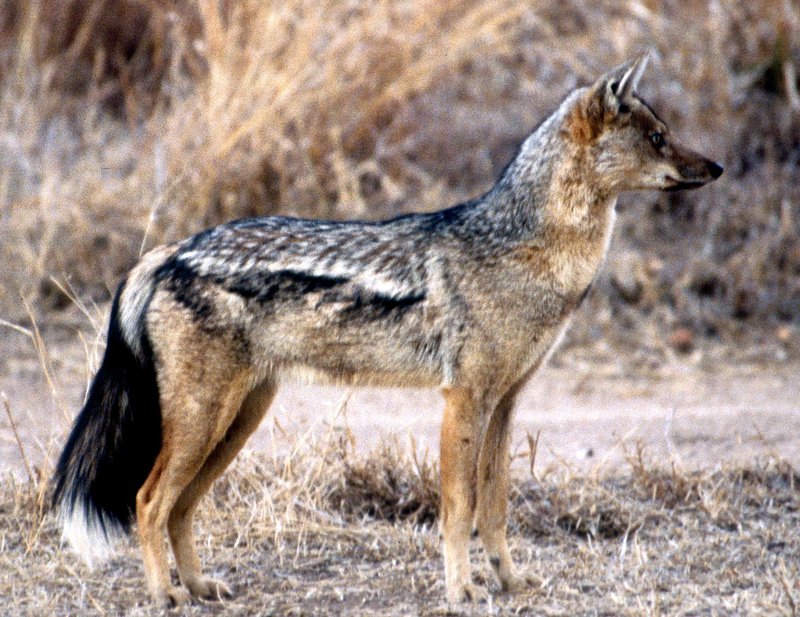
Honestly, learning about the side-striped jackal can feel like peeling an onion—layer by layer, you reveal more about their fascinating life. People have all sorts of misconceptions about them, often based on oversimplified views of wildlife. Whether you’ve spotted one on a nature documentary or heard a story from a friend, it’s easy to get things mixed up. Let’s dive into some of these common myths and misconceptions and see what’s fact and what’s fiction.
Myth 1: All Jackals Are the Same
One of the biggest misconceptions out there is that all jackals look and act alike. While they do share some characteristics, different species have distinct traits. The side-striped jackal, for instance, has a unique appearance with a grayish coat and a distinctive white stripe along its flanks.
Unlike the black-backed jackal, which is often more aggressive and territorial, the side-striped jackal tends to be more social and less confrontational. They thrive in family groups and are known to be quite playful. This packs a punch to the idea that jackals are solely opportunistic scavengers. Their social behavior can be quite surprising, especially to those who think of them as lone wolves—err, lone jackals.
Myth 2: Side-Striped Jackals Are Just Scavengers
Another common myth is that side-striped jackals are merely scavengers, living off the leftovers of other predators. While they are often seen scavenging, this doesn’t define them. Let me explain: the side-striped jackal is actually an omnivore with a varied diet that includes fruits, insects, and small mammals. They are skilled hunters, capable of catching frogs or birds, depending on what’s available.
To illustrate, imagine if you only ate leftovers every day. You’d miss out on delicious meals, right? Similarly, side-striped jackals actively hunt and gather their food, showcasing their adaptability and resourcefulness. Their ability to thrive in different environments sets them apart from the stereotype of a scavenger.
Myth 3: They Are a Threat to Livestock
You might be wondering how side-striped jackals fit into farming and livestock management. A common fear is that these animals pose a serious threat to farmers and their livestock. However, this simply isn’t the whole truth. Side-striped jackals usually target small animals like rodents and birds, which makes them less likely to hunt larger livestock.
In many regions, they actually help control populations of pests, benefiting farmers in a roundabout way. Think of them as nature’s pest control—keeping things balanced without needing harmful chemicals. That said, conflicts can occur, especially if food sources are scarce, but often, responsible farming practices go a long way in mitigating these issues.
Myth 4: They Only Live in Africa
While the side-striped jackal is often associated with Africa, you might be surprised to hear that their range extends beyond just the savanna. They inhabit wooded areas, wetlands, and even mountainous regions across southern and eastern Africa.
Imagine living in a cozy, sprawling city versus a tiny apartment; just like people prefer different living situations, so do animals. The side-striped jackal adapts to various habitats, showing their versatility. This misconception often comes from a narrow view of wildlife documentaries that showcase only a slice of their life.
Myth 5: Their Social Structure Is Similar to Domestic Dogs
You may have heard that jackals have social structures similar to those of domestic dogs, but this isn’t completely accurate. While side-striped jackals do form strong family bonds and often hunt in packs, their social dynamics are much different. For instance, they tend to have a more complex social hierarchy.
These jackals often work cooperatively to raise their young, with the whole family involved in nurturing and teaching the pups. It’s more like a tight-knit community than a simple pack like you’d find in dogs. Their social structure is a beautiful example of teamwork in nature, not just a reflection of our beloved pets.
Myth 6: They Are Endangered
Many people think that side-striped jackals are on the verge of extinction, but that’s not the case. Their populations are stable, although they face threats from habitat loss and human-wildlife conflict, much like many wildlife species today.
Conservation efforts are vital, but it’s essential to recognize that these clever jackals are far from endangered. They exhibit a level of adaptability that allows them to thrive in various environments, and understanding this can help us better protect their habitats.
In summary, the side-striped jackal is a remarkable creature that often gets lost in the shuffle of common myths and misconceptions. From their varied diet and habitats to their complex social behavior, they are much more than what most people think. By shedding light on these misunderstandings, we can gain a deeper appreciation for these fascinating animals.
So, the next time you hear a story about side-striped jackals, remember the layers beneath. Like peeling that onion, every layer reveals something unique and interesting. Let’s celebrate the diversity of wildlife and continue to learn so that we can protect these creatures for generations to come.

